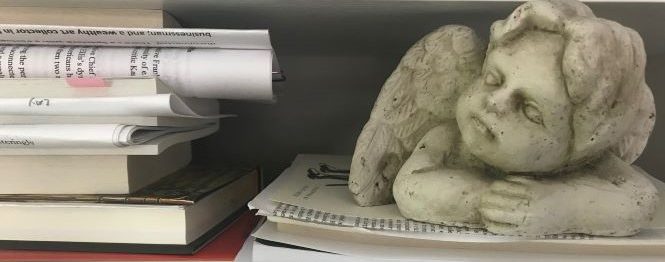 It’s odd that a dedicated literary fiction reader (me) would gravitate to a book about recording observations and experiences in the natural world. Especially considering I did everything possible to avoid science classes in high school and college, not always successfully. No matter how hard I studied the material for tests, in fact knew the material, I barely scraped past getting a C+; and yet, Field Notes on Science & Nature keeps drawing me into its pages.
It’s odd that a dedicated literary fiction reader (me) would gravitate to a book about recording observations and experiences in the natural world. Especially considering I did everything possible to avoid science classes in high school and college, not always successfully. No matter how hard I studied the material for tests, in fact knew the material, I barely scraped past getting a C+; and yet, Field Notes on Science & Nature keeps drawing me into its pages.
Some of the essays are ‘memoir-ish’ in style. Others are more data-oriented. They all, however, relate stories from the field. Contributors, such as those exampled below, write about how they got started keeping field notebooks, their methodology, their love for what they do and their adventures. Photos and illustrations accompanying the essays invite close perusal for their originality. They are reproductions from actual pages in the authors’ field journals — drawings, lists, handwritten notes, outlines and diagrams. There are 12 essays in all.

- George B. Schaller, a scientist who’s pioneered studies of endangered and little-known animals, writes about observing lions in the Serengeti plains and tracking mountain gorillas in the Congo and the chiru on the Tibetan Plateau.
- Bernd Heinrich, a scientific naturalist and marathon runner, writes about note-taking. His life and observations about plants, insects and animals are a testament to what we can see along the way, if we look.
- Jonathan Kingdon, a zoological illustrator, ecologist, writer and researcher tells us “the humblest field record is always an act of translation.” He writes about why he relies on manual drawing and not the camera to capture his observations of animal anatomy and behavior.
- Jenny Keller, a science illustrator whose work has appeared in Scientific American and National Geographic, also writes about drawing as an observational tool.
- Erick Greene studies animal behavior and ecology and answers the question, “Why keep a field notebook?”
- Kenn Kauffman, world-renowned birder, writes about keeping lists of bird species observed — how on the one hand it can be an obsessive game and on the other a contribution to scientific knowledge.
Even if something like this doesn’t float your reading boat, it might be good to keep in mind for the naturalist on your holiday list in the upcoming months. It’s a beautifully produced book that Harvard Press published 2 years ago. You can get a peek at it in this slide show on the Harvard Press website.

Finally, here’s a gem from the essay called “Letters to the Future,” a quote with the title A Note on Permanence:
“Don’t trust your memory, it will trip you up, what is clear now will grow obscure; what is found will be lost. Write down everything in full; time so spent now will be time saved in the end, when you offer your researches to the discriminating public. Don’t be satisfied with a dry-as-dust item: clothe a skeleton of fact and breathe life into it with thoughts that glow; let the paper smell of the woods. There’s a pulse in each new fact; catch the rhythm before it dies.” (Eliot Coues, Field Ornithologyy, 1874)

Lovely book; I do appreciate good drawing and the close observations of searchers. The world always presents something for us to see.
LikeLike
The world does indeed always present something for us to see, and so much of the time we’re too busy to see it. Maybe that’s why I like this book. It directs my gaze toward that which I miss in the natural world but can see in these pages.
LikeLike
Listening is pretty important, too. Right now I am hearing three or four coyotes having their evening howl. Very eerie.
LikeLike
Love that quote — so rich and true. The book reminds me of “The Country Diary of an Edwardian Lady” — a sweet collection of a young woman’s nature-sketches and poetry for each month of the year. A seemingly lost art…
LikeLike
I, too, love that quote!
LikeLike